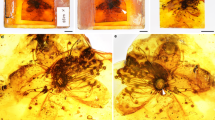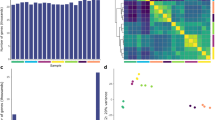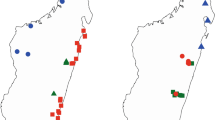Abstract
THE æstivation of the corolla of a flower of the family Malvaceae is distinctly twisted (contorted) in bud, the condition generally persisting even after the opening of the flower. A striking peculiarity of the æstivation is that in about half the number of flowers of any plant of any species of this family, the petals are twisted clockwise and the rest in a counter-clockwise fashion. The family comprises 1,200 species1 or more2.
This is a preview of subscription content, access via your institution
Access options
Subscribe to this journal
Receive 51 print issues and online access
$199.00 per year
only $3.90 per issue
Buy this article
- Purchase on Springer Link
- Instant access to full article PDF
Prices may be subject to local taxes which are calculated during checkout
Similar content being viewed by others
References
Porter, C. L., Taxonomy of Flowering Plants (W. H. Freeman and Co., San Francisco, 1959).
Lawrence, G. H. M., Taxonomy of Vascular Plants (Macmillan Co., New York, 1963).
Rendle, A. B., The Classification of Flowering Plants, 2, Dicotyledons (Camb. Univ. Press, 1959).
Davis, T. A., J. Genet., 58, 42 (1962).
Davis, T. A., J. Genet., 58, 186 (1963).
Hooker, J. D., Flora of British India, 1 (L. Reeve and Co., London, 1872).
Eichler, Blütendiagramme, 2, Fig. 115 A, 1878 (original not seen).
Author information
Authors and Affiliations
Rights and permissions
About this article
Cite this article
DAVIS, T. Æstivation in Malvaceae. Nature 201, 515–516 (1964). https://doi.org/10.1038/201515a0
Issue Date:
DOI: https://doi.org/10.1038/201515a0
This article is cited by
-
Foliar spirality and aestivation of flowers inHibiscus cannabinus Linn.
Experientia (1978)
-
Floral structure and stamens inBombax ceiba L.
Journal of Genetics (1966)
-
A preliminary study on the direction of leaf spiral and phyllotaxy in jute
Journal of Genetics (1965)
-
Leaf Spiral and Yield in Coconuts
Nature (1964)
Comments
By submitting a comment you agree to abide by our Terms and Community Guidelines. If you find something abusive or that does not comply with our terms or guidelines please flag it as inappropriate.



